The Pioneers - oddities, lesser known and unsuccesful aircraft
| This page contains slightly improved scanned reproductions of pre-WWI postcards. Quality may not always be as good as one would wish but the historical importance more than makes up for this. |
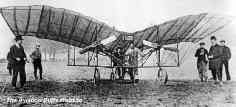
|
Pean Aircraft design was still in its infancy and some designers were highly innovative. Spectacular-looking aircraft appeared at high pace, usually leading to limited flight success. This was presumably also the case for this contraption devised by Mr.Pean. |
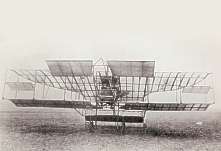
|
Bonnet-Labranche No.2 Another strange machine, this design by the brothers Emile and Albert Bonnet was powered by a 30 hp Filtz-Arion engine. |
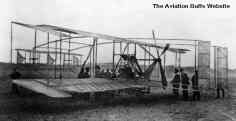
|
Germe Biplane Evidently inspired by the Wright Flyer, the Germe was a one-off design, flown by its designer. |
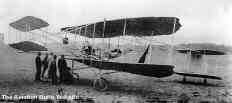
|
Sanchez-Besa Watch the curving lines of the front elevator mounting : great engineering, isn't it ? Apart from this fantasy, the aircraft used the same construction techniques as contemporary Voisin and Farman designs. It also used the well-known 50 hp Anzani engine chain-driving two pusher propellors, which was evidently a copy of the Wright brothers' propulsion system. |
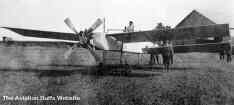 |
Kapferer Some people disliked the biplane and opted for a monoplane or, like Mr. Kapferer, for a tandem wing layout. Usually, flight success was very limited. |
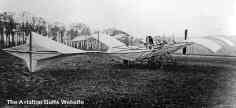
|
Guilbaut Monoplane Tandem gull wings, a kite-like tail : why not ? The designer even envisaged an exchangable float/wheels landing gear. Unfortunately, the engine's 12 hp were just a little bit insufficient. |
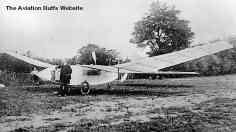 |
De La Vaux monoplane Another strange contraption, this monoplanes looks extremely frail. Its designer tried to compensate the low-power engine with a streamlined fuselage, but judging from the wing mounting it is doubtful that this aircraft survived even its first hop. |
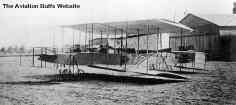
|
Piquerez Biplane Strange it may look, but a lot of thought went into this aircraft. The passenger seat was located amidships, near the center of gravity. Therefore, flying the aircraft with or without passenger did not alter flight characteristics too drastically, an error that proved fatal to many an early twoseater. |
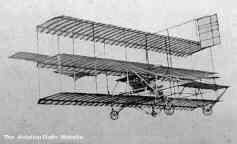
|
Melvin-Vanniman Triplane If one wing does not do the trick, maybe three will ? Mr.Melvin-Vanniman tried his luck with this exotic machine. The original photograph has been manipulated, probably to make the aircraft look as if flying although it remained solidly on the ground. |
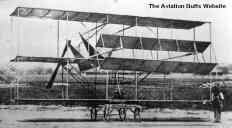 |
Bockor Triplane The Americans tried their hand at exotic flying machines as well. This triplane, powered by a 38 hp engine was seen at Morris Park, NY. |
If you entered this page directly and want to check out the rest of my website : click here to go to my Homepage. |
Last update : 15/04/00 - (c) Guido Van Roy